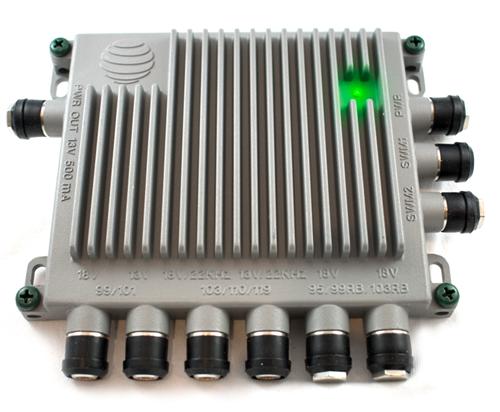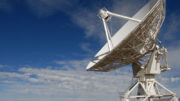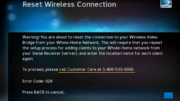It’s fun being a home theater blogger. I get to work with a level of equipment that most people don’t ever see. I also get the opportunity to work with the folks at Solid Signal in designing and specifying parts for commercial satellite TV systems. This gives me stuff to write about, and also gives me the ability to understand satellite TV at a fairly high level.
Here’s one of those cases
I’d like to talk about polarity lockers. Polarity lockers are part of commercial systems, but you see them at home as well. They’re often paired with amplifiers to normalize the output from a satellite dish.
It’s easy to understand the need for an amplifier. Signal loss happens when cable runs are too long, and an amplifier is often necessary to make sure that satellite signals don’t get too weak before they get to a multiswitch. However, most people don’t understand polarity lockers and that’s a little harder to understand.
Did you ever wonder how the signal from all those satellites travels over a single wire? If you have a SWM-enabled dish, then it’s done through assigning different channels. However, a SWM dish won’t work for commercial applications. For that you need the regular Slimline dish with six wires coming out.
The signals coming from the sky fall into six basic categories, and the Slimline dish assigns a different “character” to each one. Without getting too technical, there are three questions that are asked when classifying a signal from that dish:
- What is the voltage carried on the dish? 13 volts is one kind of signal, 18 volts is another.
- Is there a secondary signal at 22kHz on the line? Yes is one kind of signal, No is another.
- Are these the auxiliary lines used for reverse band signals?
Depending on the answer to those questions, a DIRECTV system can detect which group of signals, and which satellite’s signals, are carried on a specific line. This is important because if you’re using a multiswitch you will need to connect things up properly.
A little bit about hooking up multiswitches
When using a single wire multiswitch, the switch itself will permanently assign each cable going the dish one of the six types. A polarity locker put closer to the dish does much the same thing, but by normalizing the signals closer to the dish, it makes everything more stable. This kind of stability is important when the dish feeds dozens or even hundreds of receivers.
Connecting a polarity locker is easy. If you are using an amplifier, connect it before the polarity locker. Then, run four cables from the polarity locker to the amplifier. The outputs from the polarity locker are labeled by satellite and by odd or even polarity. Connect the cables from the polarity locker into the corresponding input ports on the SWM as follows:

- Output 1 (101E/99) into Input 1 (99/101 18v)
- Output 2 (101O/99) into Input 2 (99/101 13v)
- Output 3 (110E/103) into Input 3 (103/110/119 18v 22KHz)
- Output 4 (110O/103) into Input 4 (103/110/119 13v 22kHz)
- Output 5 (99RB) into Input 5 (95/99RB 18v)
- Output 6 (103RB) into Input 6 (103RB 18v)
Setting up your system this way makes it more stable and better for long runs and multiple tuners. If you’re connecting up more than one multiswitch, a polarity locker is even more important because you need to be 100% sure that all the lines match up properly.
A polarity locker for home?
For the most part, home installations don’t use polarity lockers. They aren’t really needed. They won’t do anything in a SWM-enabled dish installation other than make it fail, actually. I recommend them for commercial installs even when the run from the dish is short, though. The ability to lock polarities is important, but a polarity locker also provides another benefit: it powers the dish. You don’t tend to think about it but a satellite dish needs power; in non-SWM systems this power comes from the receivers themselves, while in SWM systems it comes from the multiswitch (if it’s external) or directly from a power inserter (if it’s built-in to the dish.) That’s great for home setups but a commercial setup could have one dish for dozens or even hundreds of receivers. Long cable runs can mean voltage drops across the line. Losing power to one multiswitch could take out everyone if you don’t wire the system properly.
That’s why using a polarity locker is smart. By providing that power to the dish without the need for a multiswitch or receiver, the dish will always function even if everything else goes down. (Of course if the polarity locker goes down it will fail but at least you’ll know where to look.)
Want to know more?
Are you interested to find out more about commercial DIRECTV installations? Call the experts! Our techs are available during East Coast business hours. Call us at 888-233-7563. After hours? No problem! Fill out the form below. We’ll get right back to you.





